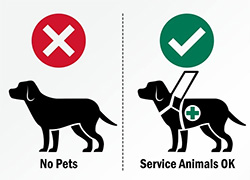Exciting Finds in Selva Verde’s Rainforest Reserve
COSTA RICA NEWS
New photos from camera-trap stations
In December, we shared the news about implementing camera-trap sites in eight locations throughout Selva Verde’s reserve. The cameras, part of ongoing study on mammalian diversity being conducted by scientist Marta Vargas, BS, have yielded impressive results, more so than initially anticipated.
Take a look at the newest residents enjoying solace in Selva Verde’s reserve:
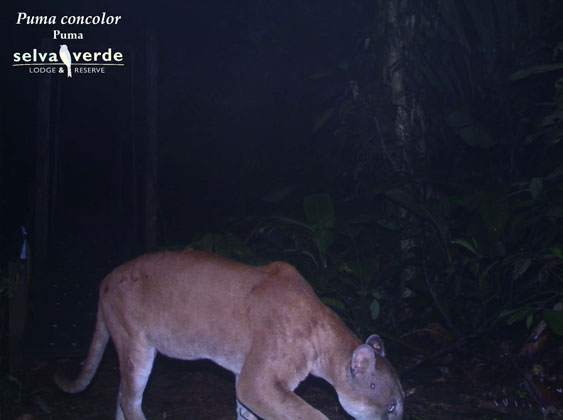 Puma concolor // Puma
Puma concolor // Puma
The Puma concolor, commonly called: cougar, mountain lion, puma, or panther, is the largest in the ‘small’ cat category and is known for its mysterious and solitary existence. Although the puma has the largest distribution range in the Western Hemisphere of any land mammal, ranging from Canada to the tip of Chile, their population is currently decreasing due to habitat loss and fragmentation. Pumas inhabit a wide variety of ecosystems, including all forests, as well as lowland and montane desert, however research has shown they prefer areas with dense understory vegetation, such as the lowland rainforest of Sarapiquí.
Comments from Ivan Castillo, naturalist guide at Selva Verde: These photos are the first photographic proof of the puma in the reserve; for many years we have only had indications of its existence in the form of footprints, and evidence of animals it has preyed upon. So this record is considered a prize in terms of conservation efforts made throughout the history of Selva Verde.
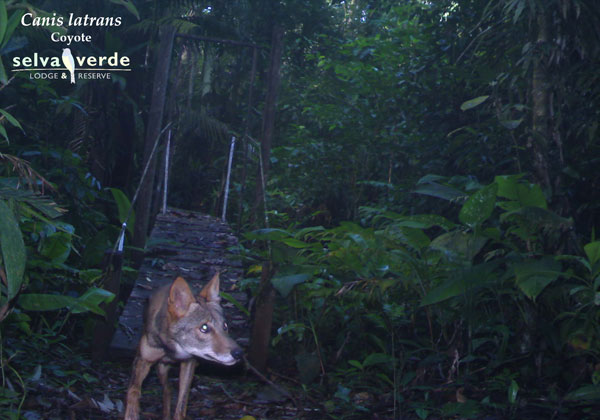
Canis latrans // Coyote
The Canis latrans commonly called coyote, jackal or prarie dog is one of the most adaptable species mammals. They are found from Alaska to western Panama, and have been shown to be smaller in Costa Rica, with respect to those found in Alaska. They have a wide geographical distribution and can live in varied environmental settings, including suburbs and cities. Coyotes have an omnivorous diet, “in Selva Verde their main prey include: Green iguana (Iguana iguana), Agouti (Dasyprocta punctata), Sloths (Bradypus variegatus, Choloepus hoffmanni), as well as other arthropods, fruits and berries such as figs (Ficus spp.) and "medlar” (Manilkara zapota), making them important seed dispersers of these plant species.” (Ivan Castillo). A coyote’s living style is just as diverse as its diet—some live alone, others travel in mated pairs and some live in packs.
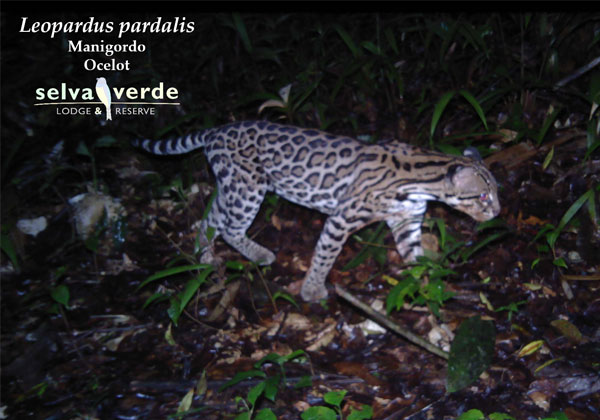
Leopardus pardilis // Ocelot
The ocelot is a relatively small wild cat, about twice the size of a domestic house cat. Each ocelot has a distinct coat pattern; no two are the same, and the species varies greatly with around 10 subspecies. Like the puma, the ocelot is typically a solitary creature, and nocturnal by nature. Comments from Ivan: This cat has been observed more times throughout the years in the reserve and we have several photographs from the camera-trap documenting its existence within the forest; however several of our visitors have been fortunate enough to seem them in-person on the grounds of Selva Verde.
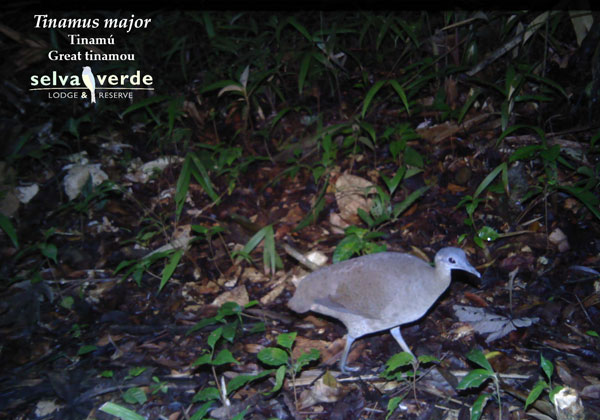 Tinamus major // Great Tinamou
Tinamus major // Great Tinamou
The Great Tinamou is a large tinamou, residing from the southern region of Mexico down through Amazon basin. It’s quavering powerful song can be heard mostly at dusk and dawn and penetrates an impressive distance through the forest. Its large size and prominent song are what distinguish the Great tinamou from other species of tinamou.
Comments from Ivan: Great tinamou’s have a cryptic color, perfectly adapted to the darkness of the forest floor, in addition to their large eyes, which allow them to be on the lookout for predators. As with most of the 46 known species in the American continent, the males of this species are responsible for incubating and caring for the chicks.






